#fielded
Explore tagged Tumblr posts
Text
billy woods - Western Education Is Forbidden (ft. Fielded)
23 notes
·
View notes
Text
Armand Hammer, Quelle Chris, and H31R at Bowery Ballroom
On Thursday, November 16, 2023, New York City’s Armand Hammer performed a sold out show at Bowery Ballroom in support of their newest album, We Buy Diabetic Test Strips, that is out now on Fat Possum Records. The show was a part of their tour which was called “We Buy Diabetic Test Strips: The Physical Experience.” Silka performed a short set as well before Armand Hammer took the stage.
The duo were joined by H31R (JWords and Maassai), who released their new album the following day, and Quelle Chris, who brought out special guest Cavalier during his set. I covered the show for Impose Magazine and the full gallery is now available on their website here.
#Armand Hammer#billy woods#Elucid#Quelle Chris#H31R#Bowery Ballroom#Maassai#JWords#Fielded#Backwoodz Studioz#Cavalier#Silka
3 notes
·
View notes
Text
FEEDBACK LOOP #14: Voodoo Macbeth: Armand Hammer's "Windbreaker"

…Each new morn / New widows howl, new orphans cry, new sorrows / Strike heaven on the face…
—Shakespeare, The Tragedy of Macbeth (1623)
They use me wrong, so I sing this song to this day.
—Nas, “I Gave You Power” (1996)
1.
Once upon a time, woods “had a gun once.” “Windbreaker” is woods’ adaptation of Shakespeare’s tragedie Macbeth. Stories retold and resold—twice the first time, like Saul Williams once said. Not until you’ve listened to Rakim on a rocky mountaintop have you heard hip-hop. And not until you’ve staged Shakespeare in a sludge-slicked 150th Street Harlem sewer have you heard hip-hop either. A young Orson Welles directed what became known as Voodoo Macbeth on behalf of the WPA’s Federal Theatre Project in 1936. Featuring a full African-American cast, the play took place in a quasi-Haitian setting complete with tropical-cum-skeletal stage design—palm fronds and bone altars. We live in Storyville where the population density reaches hypersensitive levels and the murder police can’t keep up with the homicides. (Meanwhile, the Second Witch busies herself with “Killing swine” [1.3.2] in Macbeth.) We’ve been here before, before. Slick Rick’s “Children’s Story” (1988) told us to bite our tongues, that this ain’t funny so don’t you dare laugh, it’s just another case about the wrong path. He warned, in a playful and pajamaed manner: “Straight and narrow or your soul gets cast.”
2.
“Windbreaker” is a [re]mixture in the witches/bitches brew of Nas’s “I Gave You Power” (1996), too. The power, you could guess, is a wily one capable of possession. “Possession” in a legal sense—nine-tenths of the law and so forth; possession of a firearm [see: S. Carter, B. Sigel, Shyne, et al.]—but also the possession the gun holds over its owner. Those finding themselves possessed by the gun—a weapon which “made you buckwild,” in Nas’s terms—should brace for berserk behavior modifications. We can splice together epileptic seizures and Santería and call it spirit possession just the same. The possession is pervasive—everywhere. The ubiquity of guns in the collective imagination takes up serious real estate—we’re talkin’ eminent domain land grabs—and Nas’s psyche is no exception:
I was around a lot of guns then. Guns were in my sleep, in my car, in my home. Guns were on my person, guns were on my friends. That’s how much they were around. There was so much around me that I rapped about it. It’s crazy to think about that today, but it was my reality. It was in my head 24/7.
“Windbreaker” functions as an exorcism of that exact sentiment.

3. RECKLESS WHAT
Blow wind! Come wrack!
—Shakespeare, Macbeth (5.5.58)
The wind forebodes. woods gets handed the gun “late night, right on the porch,” and it must be windbreaker weather. woods’ jacket rustles in the gusts. “I’ll give thee a wind” (1.3.12), the Second Witch says to the First, and the “wind” she refers to is what the witches bestow upon each other to exact revenge. woods, though, breaks their wind (true to the song’s title and his heroic epithet, likely). He’s not susceptible to their marshy shufflings, their murky hells. He “speak[s] things strange” (1.2.52-53), as Lennox says of the worthy Thane of Ross.
But the winds are everywhere (like guns)—they be blowin’ like Maceo Parker in a buhloone mindstate. They blow the horrid deed in every eye and “tears shall drown the wind” (1.7.24-25). Word to the RZA and Wendy Rene: after the laughter comes the tearz. But the winds swirl and cyclone and gyre skyward. woods, “like a naked newborn babe,” survives by “Striding the blast” (1.7.21-22) as a cherubim might, riding the breeze. He’s Kong learning to stop worrying and love da bomb. He straddles and hoots and hollers from the hydrogen missile. A hard acid reign’s a-gonna fall [RIP to Gajah].
Of Macbeth’s poor murderers, the second says: “I am one… / Whom the vile blows and buffets of the world / Hath so incensed that I am reckless what / I do to spite the world” (3.1.121-124). Shakespeare knows the sway of poverty over moral decisions, like the Apothecary in Romeo and Juliet whose “poverty, but not [his] will consents” to selling illegal, poisonous drugs to Romeo. woods gets beat back by the gale-force winds, but he bests those “buffets of the world.” Everything’s for sale except for the Beaufort scale.
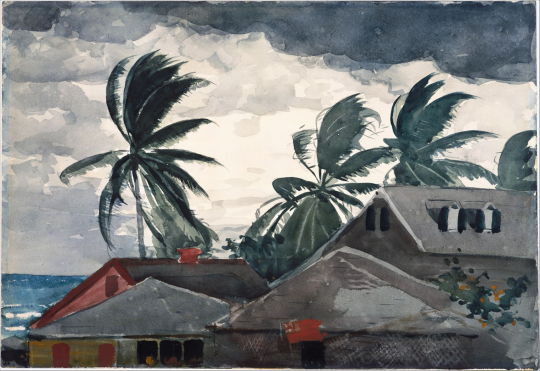
4. YO-HO-HO
The gun, in the case of “Windbreaker,” is equivalent to Robert Louis Stevenson’s Black Spot. That is to say, the song isn’t so much a billy woods metanarrative as a twice-told tale of Billy Bones in Treasure Island (1883). Passed from pirate to pirate, the Black Spot is a black-sided death sentencing, a Last Judgment on a scrap of paper. Biblical bad luck. A Book of Revelation back-page pressed into a fist. Maritime connotations aside, the Black Spot signals that it’s marring time, so make yourself scarce or knuckle up.
woods claims to have only had the gun “for about a month,” and he was none too keen on keeping it. The gun, we assume, had traveled many travails and trials, tribulations too; that it had “been in the hands of mad thugs,” as Nas puts it. Mad meaning “many” but also “crazed” and “deranged.” Mad like diaries maintained by gravediggaz. Pick, sickle, and shovel-wielding men. The gun, the “brandished steel, / Which smoked with bloody execution” (1.2.19-20) is bequeathed to woods as it was to so many others. Less a gift than a curse. “Sick of the blood,” Nas-as-gun raps, “Sick of wrath of the next man’s grudge.” This gun—like any gun, perhaps—is one that harbors a self-consciousness. Maybe it is the guns that kill people, personified with malevolence [male violence].
Unlike countless others, woods doesn’t choose to use the gun to cement his masculinity. As Macbeth tells his wife, woods is already man enough, and “who dares do more is none” (1.7.52)—a negation of that manhood. Overkill, let’s call it. Mac daddies and MAC-10s: Nas is like the phallocentric Asian, half-man, half-guns blazing. “The barrel’s my dick,” he explains, “Uncircumcised, pull my skin back and cock me.” Macbeth, meanwhile, questions his hallucinating senses, “Is this a dagger which I see before me, / The handle toward my hand?” (2.2.44-45). The blade is bloody, possibly with menses, yet he still grapples for control: “Come, let me clutch / thee” (2.2.45-46). In doing so, he’s giving mics menstrual cycles. “The game is so irresistible to touch,” LL Cool J once said of the mic phallus, “You should see me when fiendin’ for microphones that I can clutch.”
In a letter to his wife, Macbeth writes that he “stood rapt in wonder” (1.5.6), explaining what he witnessed held him in thrall. On the porch, billy woods is likewise “rapt withal” (1.3.60). Banquo knows “instruments of darkness tell us truths” (1.3.136). But woods is “too full o’ th’ milk of human kindness” (1.5.17) to use the gun; he doesn’t have “slaughterous thoughts” (5.5.16). And even if he does, his ignorance and mystification prevent him from reaching for the strap.
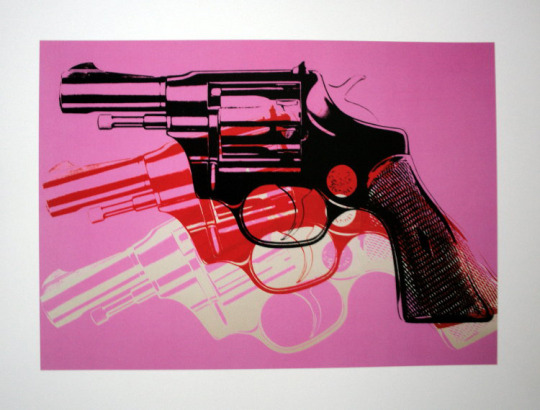
5.
A dagger of the mind, a false creation…
—Macbeth (2.2.50)
The story told in “Windbreaker” raises questions of realities and false narratives, actual fears and imagined ones, authenticity and authorship—in short, the friction that exists between fiction and figment. woods mixes up the simulacra of hyperreality like the guy Quelle Chris knew on “PSA Drugfest 2003” that “mix[ed] up a spliff like witches with newt eye.” We’re pulled in by woods’ first-person point-of-view (“I had a gun once,” followed by a proliferation of Is) but put off by his reluctance to divulge the details. He bleep censors the name of who he “got it from.” By doing so, he protects the innocent, the guilty, and every gradation of conscience in between. The unidentified person who gives him the gun could be a peer, an elder, a mentor, a bad influence, or some combination thereof. Regardless, the nameless and faceless figure—a mysterious character, if we choose to lean into the fictitious realm—“showed [woods] how to load it” in the “same place [he] showed [woods] how to roll a blunt,” linking two illicit activities, both requiring punctilious attention to detail. Of gats and ganja; of heat and hemp.
woods demonstrates the blurry border between fact and fiction in the scene details. The gun is handed off clandestinely under the cover of “late night,” yet the location (“right on the porch”) is indiscreet. This doubling (call it down-low and out-front) plays out anadiplotically when woods says, “[They] was speaking soft, / Soft pack of ’ports.” The sibilance of “speaking soft” suggests secrecy (if worse come to worse keep this on the hush, Lil’ Cease might say), but the point-blank alliteration of “pack of ’ports” sounds like when your guns go pow-pow (word to Big L). Furthermore, the soft pack of stoges—though its connotation implies silence—has a plastic wrapping that crinkles like a windbreaker, attracting unwanted attention.
6.
The gun given to woods is far from perfect, in fact, the weapon is “scratched and marred where the numbers was filed.” Like the bleep censors, the redaction of the serial number safeguards against snitching. But, as the pattern of the one-verse song shows, that which is criminal is liminal. Those defaced numbers, well, “you could still see ’em.” One thinks of Macbeth’s dagger cloaked in hemoglobin: “...on thy blade and dudgeon, gouts of blood” (2.1.58). One remembers Nas’s encounter with “a wrecked-up TEC with numbers on his chest that say: / 5-2-O-9-3-8-5 and zero.” The TEC yearns to confess, “hoping one day police would place where he came from, / A name or some sort of person to claim him.” But with his “serial defaced,” the TEC shares the same fate as Lady Macbeth: beyond saving. Just as doctors can’t “raze out the written troubles of [Lady Macbeth’s] brain” (5.3.52), so too can’t you resurface a scratched-off serial number.
To include bleeped names and scratched-off serial numbers is to engage in a sort of scriptorium subterfuge. Historically, we’ve seen this in novels, as John Barth explained in “Lost in the Funhouse” (1967): “Initials, blanks, or both were often substituted for proper names in nineteenth-century fiction to enhance the illusion of reality. It is as if the author felt it necessary to delete the names for reasons of tact or legal liability. Interestingly, as with other aspects of realism, it is an illusion that is being enhanced, by purely artificial means.”
Uncertainty abounds. woods can’t even accurately identify the weapon he’s handed: “.38, .22—I’m not even sure.” It could just as well be Nas’s Desert Eagle, a “semi-auto with lead.” These redactions, this unknowingness, inevitably leads to confusion. One must forgo epistemic approaches and settle for feels. Nas’s aforementioned Desert Eagle, as an example, measures at “seven inches” and weighs “four pounds.”
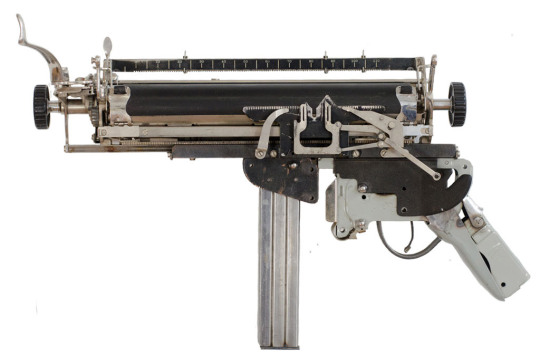
7.
Emotional liftin’—please use the proper form: / Bend at the knee.
—“spongebob” (2019)
But little and heavy as a dead child. The game is the game, but the gravity of the situation increases with woods’ somber simile. That uzi, or .38, or .22— weighs a ton. But it’s the emotional weight that’s so exhausting. “Windbreaker” opens with a bevy of words with short-u sounds—words with heft, words that carry bend-at-the-knee weight: gun | once | month | blunt. A significant weight, like Biggie’s ubiquitous uh adlibs. woods throws haymakers, heaves shots. By all accounts, he’s acting “wild truculent” (as Breeze Brewin once said on “Weight” by the Indelible MC’s). woods holds the gun with “Macbeth hands,” a phrase he drops on Armand Hammer’s “Duppy.” Macbeth speaks of “dread exploits” (4.1.164), and woods works in dread[ed] talk (s/o to Velma Pollard), that Iyaric, a protest language and flexi lexicon, to ward off the weight of what violence he might have the capacity to engage in.
You show loyalty; they learn loyalty. But Macbeth disregards the value of his commander Banquo even after leading Duncan’s army alongside him. He keeps the plot to murder Banquo “from the common eye” for “sundry weighty reasons” (3.1.141-142), most of which are purely practical. The Thane of Cawdor doesn’t consider the guilty conscience he’ll have to carry. He doesn’t contemplate “that perilous stuff / Which weighs upon the heart” (5.3.54-55). woods does.
On “Heavy Water” (emphasis on the heavy—we’re talking some brine pool shit), woods told us “the play-within-the-play was G. Dep as Macbeth,” and thus hands us a key. G. Dep, who confessed to killing an innocent man seventeen years after the fact, couldn’t function under the weight of what he’d done. “I didn’t feel free and clear,” he said from prison where he’s serving 15-to-life. “Everyday I was faced with this memory, with this heinous act, that didn’t really have to happen….I had to do what I had to do to get that burden off my chest.” That burden off his chest. “Burden” from the Old English byrðen, meaning “load, weight” but also “a child.” (But little and heavy as a dead child.)
G. Dep endeavored to lift the weight off his chest, but woods prefers to hide the weight in a chest. woods secretes the gun—and his shame at even accepting it—in various places, all of which prove porous. He “had it hid under bed”—those deadweight d’s burying any misdeed deeply—but he “couldn’t sleep” like some Princess and the Piece. He’s a sensitive soul, feeling it penetrate his back leaving him black and blue all over his body. Mattress upon mattress upon mattress, and he still felt its presence. No quitter, woods seeks other unseen spots—ahem, hiding places—like “in the shed, somewhere Moms couldn’t reach.” I was made to kill, Nas rapped, and “that’s why they keep [the gun] concealed.” Nas tried to squeeze “under car seats” and sneak into clubs. By verse three of “I Gave You Power,” he’s “still stuck in the shelf with all the things that an outlaw hides.” As we see, any attempts at avoidance are mostly ineffective.

8. THE WEÏRD TURN PRO
woods is unsettled. Who can make sense of machine gun etiquette? The man feels damned. “Damned if you do, damned if you don’t,” he raps, noticing “both shoulders had demons.” Can’t brush ’em off. As Macbeth says, “Cannot be ill, cannot be good” (1.3.144). Out, damned spot, out, I say! One. Two. (5.1.37). But the spot is blown, and Lady Macbeth can’t do a damn thing about it. She can try to sound like Biz Markie as much as she wants (“...a one-two, a one-two…”); she can make like Special Ed and fetch the Cascade, but there’s no getting those red stains off her hands.
“I was scared,” woods tells us, “’cause [redacted] heard [redacted] was tryna rob me.” But even self-defense shuffles closer to self-destruction. “I was more scared,” he explains, “when I took the gun, to be honest.” He fears both the threat on his person and the weapon intended to ward off any such maneuvers. He feels stuck: “By then, too late to say I didn’t want it.” We can assume his “dome was aching” like the man in Nas’s song who reaches for the gun, finally. woods “walked home in the darkness,” in his frantic thoughts. Somewhere along his route he was detained by “three witches on the marshes.”
Rewind back to the beginning of the song. “And I know it better than before,” Fielded sings, “they want me to notice—even out the score.” Fielded becomes all three Weïrd Sisters in one: she turns to they. For weïrd read “fateful.” Depending on which Shakespeare folio you’re flipping through, the word is also spelled weyward and weyard. They all come from the Scottish form of wyrd, though—the Old English word for fate. The Weïrd Sisters, or witches, are tied up in some real Hussein Fatal/Fatal Hussein business. I’m pretty sure that I won’t be ready when they come through that door, Fielded sings with “the syllable of dolor” (4.3.9), evoking the lurking evil, the looming dread, that woods experiences. Fielded—whose stage-name is near-synonymous with the marshes and heaths on which the witches appear—sings of seething vengeance (“even out the score”) and simmering nervousness (“I got somebody coming for me in the night”).
Fielded, in their role as the Weïrd Sisters, is warmer to woods than Macbeth’s encounter with the witches. Fielded warns him, it sounds like, not to cross them. In an evasive move, woods goes metaphorical. He feels like a “dinosaur in the tar pit.” He marks sharks as “all cartilage.” (The witches include “maw and gulf / Of the ravaged salt-sea shark” [4.1.24-25] in their cauldron ingredients, by the way.) Sharks for woods; scorpions for Shakes. “O, full of scorpions is my mind” (3.2.41), Macbeth moans. woods feels his “blood cold as the water is,” while Macbeth looks to the “multitudinous seas incarnadine” (2.2.80), meaning the ocean turns blood-red. The arrival of Banquo’s ghost at dinner is likened to the approach of “the rugged Russian bear, / The armed rhinoceros, or th’ Hyrcan tiger (3.4.122-123). Bears, rhinos, sharks, scorpions, and tigers…oh my!
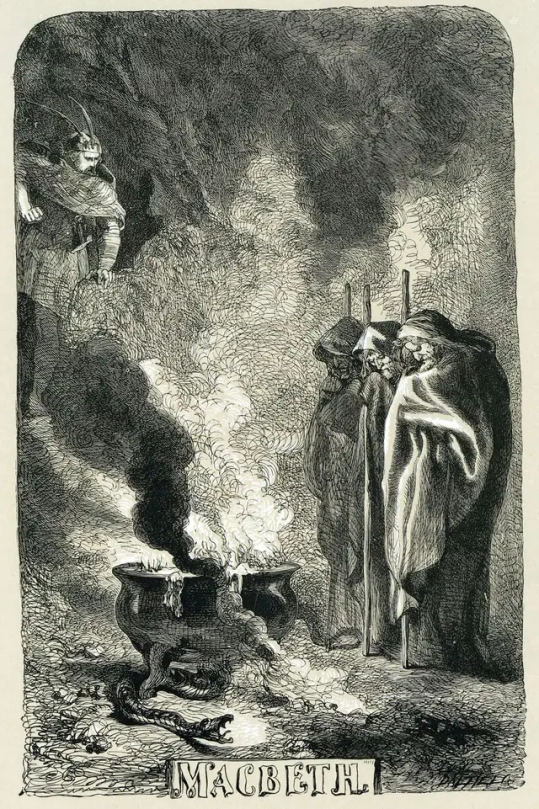
9. SLUMB’RY AGITATION
A heavy summons lies like lead upon me, / And yet I would not sleep…
—Banquo, Macbeth (2.1.8-9)
“Fair is foul, and foul is fair” (1.1.12-13), the witches say in unison. woods hovers through the fog and filthy air thinking, Fuck a fair one—I get mine the fast way, like Biggie on the “Flava in Ya Ear” remix from ’94. On “Halloween Fell on a Weekend,” woods was talkin’ witchy: “Fair is foul, / Awkward smile.” Nas, for the record, noted how the intrusive gun thoughts were “making every ghetto foul.”
But what’s really foul and utterly unfair—a flagrant foul, a Flagrant 2—is the sleep troubles. “I slept with no dreams,” woods raps. But his dreamless sleep is more of an insomnia. “Methought I heard a voice cry, ‘Sleep no more!” Macbeth says, turning over in the sheets to speak to himself in the third-person, “‘Macbeth does murder sleep’” (2.2.47-48). woods looks a ghost now, a somnolent wanderer: “Asleep on my feet, / Awake when niggas sleep.” The repetition of sleep at the start of one clause and at the end of the next signals the circularity of the story being told.
We can’t help but summon Nas’s “cousin of death.” And Macduff refers to “downy sleep” as “death’s counterfeit” (2.3.88). woods is restless, “tempest-tossed” (1.3.26), enduring the night where “wicked dreams abuse / The curtained sleep (2.1.62-63). “Headlights splashed the curtains,” woods raps, and instead of sheep he’s “counting every car passin’ in the street.” He may as well be midnight marauding like Lady Macbeth with a taper. When the Doctor notes that Lady Macbeth’s “eyes are open,” the Gentlewoman clarifies that “their sense are shut” (5.1.26-27). Nas, Queensbridge-bred, opens his penthouse lids to “see some cold nights and bloody days.” If only Lady Macbeth had been as alert as Nasir Jones or billy woods.
10. BLACK MACBETH WILL SEEM AS PURE AS SNOW
The gun, which was described as “little and heavy as a dead child” (G. Dep’s debut was called Child of the Ghetto, as fate would have it), returns to haunt us at the end of “Windbreaker.” The baby image, in Shakespeare’s terms, becomes “doubly redoubled” (1.2.42). When the hurly-burly’s done, it’s the kids who suffer. A generational pain that folds back in on itself. An inheritance of the horrific. Look around: dead babies are everywhere.
Ross speaks of Macduff’s murdered household where he discovered “babes / Savagely slaughtered” (4.3.240-241). Nas delivers a choral ode about how he, as gun, “might have took your first child.” Slick Rick rapped of “a little boy who was misled.” That boy found himself in a woods-like dilemma, calculating the consequences: I’ll do years if I pull this trigger. If not a corporeal death, a death of the spirit.
The Weïrd Sisters promise Banquo that he’ll father kings—bank on it, they say. And so Macbeth fears Banquo’s children will be the future kings of Scotland, usurping his throne. Macbeth decides: Banquo’s gotta go. Not only his brethren-in-arms, but Banquo’s son Fleance, too. Fleance “must embrace the fate / Of that dark hour” (3.1.156-157), Macbeth determines, all in order to assure his place on the throne. When Macbeth ambushes Banquo in Act 3, Scene 3, Banquo implores his son to “fly, fly, fly” (3.3.25)—he tells him to supa fly, to supa dupa fly. To be fresh, wild, and bold, too—like the Cold Crush would advise.
woods, as Banquo, is drawn into a terminal life, a posthumous life, when he is given the gun. That hand-off arranges his end. “Banquo when I think of my kids,” he raps. “Banquo when I kiss my son in his crib.” This is the Fleance farewell. But woods is unwilling to go the way of Banquo. He doesn’t only want to save his son—he wants to save himself. “Stunningly,” Nas says, “tears fall down the eyes of these so-called tough guys.” woods rebuffs the “heavy as a dead child” gun. The only weight he wishes to feel is his son asleep in his arms.
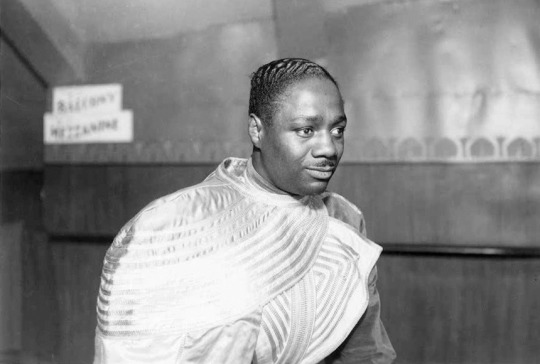
11. THE WOOD[S] OF BIRNAM
It felt wrong knowing niggas is waiting in Hell for him.
—Nas, “I Gave You Power”
“Here’s a knocking indeed!” remarks the Porter in Act 3, Scene 1. He considers the vocation of “porter of hell gate” and mocks the incessant knocking: “Knock, knock, knock! Who’s there, i’ / th’ name of Beelzebub?” (3.1.1-4). Careful what you ask for and be wary of the knocks you answer to. woods can knock the hustle. He’s none-too-anxious to join the mobb of “murd’ring ministers” (1.5.55) we hear about in the Scottish play or Track 4 on It Was Written. Still woods, eventually, commits to composing a kind of murda muzik—equally bloodletting and bloodshedding in its emotional registers and range. “[T]he blood-boltered Banquo smiles” (4.1.138) knowing he’s secured futures for his kids. He rests easy. It’s presupposed that the gun gives power, but on “Windbreaker” we learn that the weapon deprives us of power, leaving us with nothing to pass on but the curse.

Images:
Photograph of the Nat Karson design used to create the backdrop for the Federal Theatre Project production of Macbeth at the Lafayette Theatre, Harlem, 1936 (detail) | Opening of the Federal Theater Project production of Macbeth at the Lafayette Theatre, Harlem (1936) | Winslow Homer, Hurricane, Bahamas (1898) | Andy Warhol, Gun, black, white, and red on pink (c. 1981-82) | Ravi Zupa, Mightier Than Guns sculpture series, disassembled typewriter, stapler, and scrap metal (c. 2016) | G. Dep, Child of the Ghetto album cover, 2001 (detail) | “Macbeth visits the Weird Sisters (Three Witches) on the blasted heath,” title page by John Gilbert for an edition of Shakespeare’s works (1858–60) | Canada Lee as Banquo in the Federal Theatre Project production of Macbeth at the Lafayette Theatre, Harlem (1936) | Photograph of the Nat Karson design used to create the backdrop for the Federal Theatre Project production of Macbeth at the Lafayette Theatre, Harlem, 1936 (detail)
2 notes
·
View notes
Text
writing advice for characters with a missing eye: dear God does losing an eyes function fuck up your neck. Ever since mine crapped out I've been slowly and unconsciously shifting towards holding my head at an angle to put the good eye closer to the center. and human necks. are not meant to accommodate that sorta thing.
#like it started with me just holding things more towards my right#but the things started shifting more towards center and my head turns instead#like. when im driving especially i have to keep my head turned so i can see on coming traffic#and when im around people ive noticed i position myself so my body is facing them and then turn my head to get them actually#centered in my now very right biased field of view#so anyways draw blorbo bleebus cheated to that 3/4s angle without guilt#at least one one eyed fucker actually does that
84K notes
·
View notes
Text
i completely understand & agree with the backlash against students using chatgpt to get degrees but some of you are out here saying "getting a degree in xyz means pulling multiple consecutive all-nighters and writing essays through debilitating migraines and having severe back pain from constantly studying at your desk and chugging energy drinks until you get a kidney stone and waking up wishing you were dead every day, and that's just part of the natural process of learning!!!" and like. umm. i don't think that any of us should have had to endure that either. like maybe the solution for stopping students from using anti-learning software depends on college institutions making the process of learning actually sustainable on the human body & mind rather than a grueling health-destroying soul-crushing endeavor
#be free my post#im hyperbolizing based on a post i saw in passing#about how getting a degree in a certain field meant eye strain and back pain etc#but my point stands
35K notes
·
View notes
Text
Something about the pacing and editing of this bit when he just kept saying 3 really scratched my brain
37K notes
·
View notes
Text


by ryanresatka
#superbloom#california#wild flowers#aesthetic#nature#naturecore#fields#landscape photography#nature photography#fairycore#flowers#curators on tumblr#up
23K notes
·
View notes
Text

Look Up
~~~
I don't usually dabble in realism - but this was a gift for someone very meaningful in my life. And some things just deserve to be painted as they are.
#my art#artists on tumblr#art#my paintings#should be noted I live in the middle of what is probably the most unphotogenic pile of hills and fields ever#but the sky was popping off that day#and there's a metaphor in there somewhere#but pretty clouds#original art
24K notes
·
View notes
Text




#gif#scenery#view#sky#space#nature#naturecore#beautiful#art#photografy#landscape#art aesthetic#photography#aesthetic#places#wallpaper#pretty#sunset#stars#clouds#field#meadow#cottagecore#moodboard#spring#sunrise#cloudscape#art nature#mountains#explore
63K notes
·
View notes
Text




i come from the universe where everything is the same except disney heroines get like an ounce of their fathers' obviously dominant genes and their clothes are like 80% more historically accurate. it's beautiful here.
[2] [3]
#do you like my awesome screenshot edit/style match skills.#i've been honing this for years#i love how these turned out#alsooo i think aurora is the prettiest princess ever :[ i love her 40s influence smmm <3#her parents r great and alive too... ily king stefan he's very pretty#also it drives me up the wall how fat people are drawn with TOTALLY different proportions than the protags#i do enjoy both looks but i wish they blended better. like at least give them. similarly sized skulls. yknow.#disney#beauty and the beast#sleeping beauty#do you like my totally out of left field random post at 5am on january third?? enjoy#redesign
26K notes
·
View notes
Text
Fielded - Plant Love
8 notes
·
View notes
Text
Let’s sit here 🍃
#paradise#explore#landscape#meadowcore#wanderlust#grass#nature hikes#naturecore#breezy#fieldcore#wildflowers#peaceful#relaxing vibes#nature walk#meadow#simple life#adventure#cottagecore#inner peace#nature peace#nature scenery#green nature#grassy field#lush greenery
18K notes
·
View notes
Text
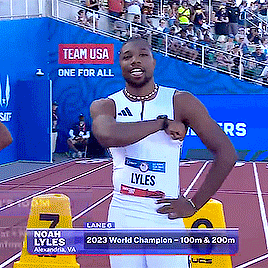


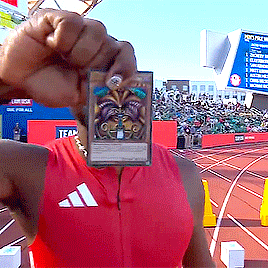
NOAH LYLES pulls out the Blue-Eyes White Dragon and Exodia the Forbidden One Yu-Gi-Oh! cards before winning all of his 100m races at the 2024 Olympic trials
#noah lyles#pocedit#dailymenedit#mancandykings#celebedit#celebsource#yugioh#yu gi oh#mensource#dailymalecelebs#black men#black tumblr#userthing#cinemapix#black fc#male fc#poc fc#usatf#track and field#mygifs
40K notes
·
View notes
Text
imma say something controversial but found footage horror when done by people with a gigantic budget suck. found footage horror has and will always belong to amateur horror directors with their cheap camera, friends as their actors, and some random location
15K notes
·
View notes
Text
Apparently the local university’s undergraduate entomology course sends students to catch insect specimens at the same place I like to go birdwatching, which explains why I saw three enormous frat looking dudes with tiny bug nets and overheard one emphatically say “bro BRO I told you we already have enough lepidopterans”
#I told my brother (in the ag field) this and he said ‘oh those are definitely turf bros’#apparently entomology is a required course if you want to specialize in golf course management which I guess is a career that some desire#and there is some Westside story type beef between the turf bros taking entomology for pest control reasons and future PHDs who love bugs#actually chatted with them later they were very lovely
38K notes
·
View notes